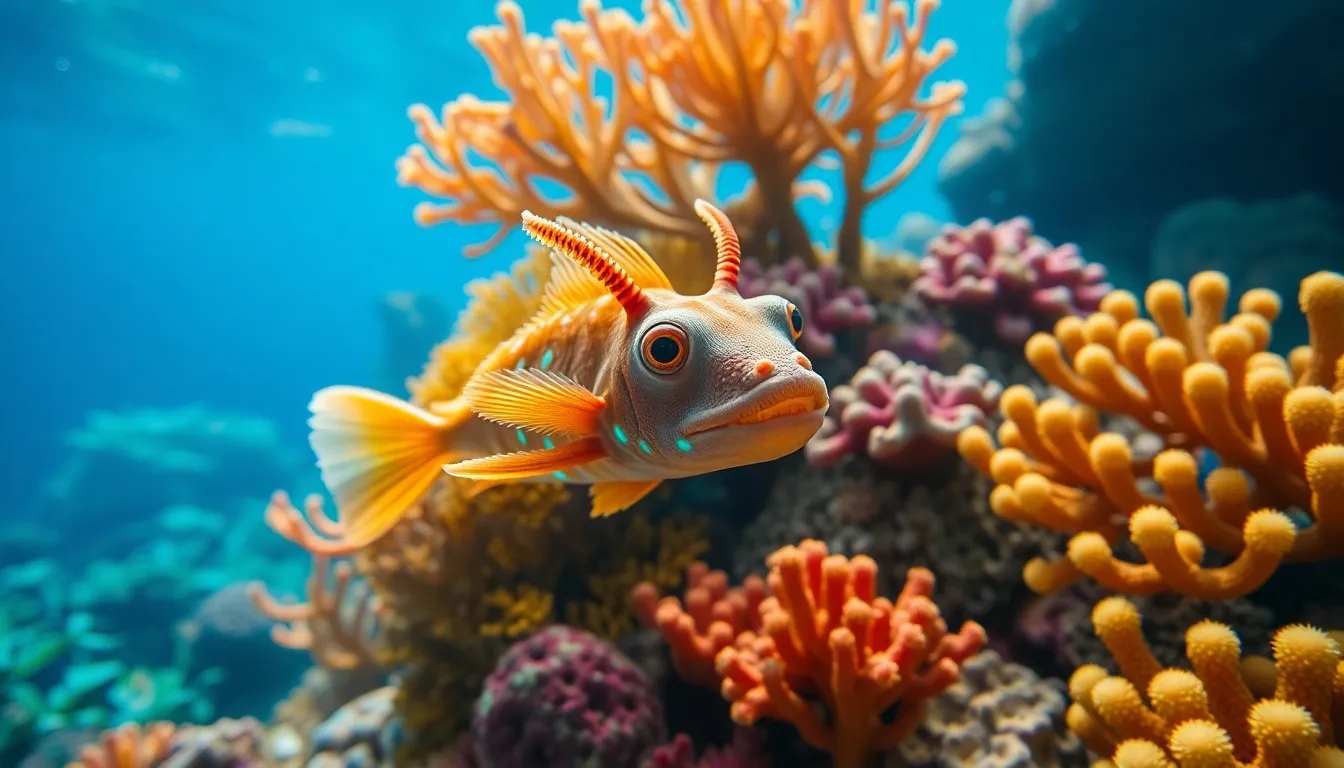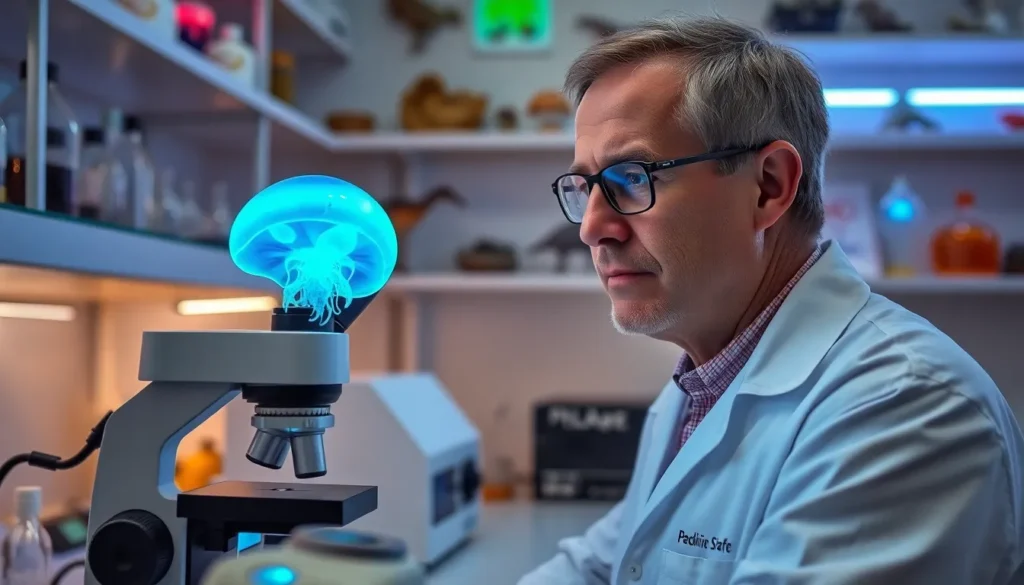Table of Contents
ToggleHave you ever wondered what makes the world of strange and unusual creatures tick? Enter the fascinating realm of ostropologe, where the quirky meets the scientific. This unique field dives deep into the study of bizarre organisms, uncovering secrets that could make even the most seasoned biologist chuckle.
Overview of Ostropologe
Ostropologe encompasses the investigation of peculiar organisms that defy conventional biological classifications. Researchers in this field analyze adaptations that allow these creatures to thrive in unique environments. They explore phenomena such as bioluminescence, extreme survival mechanisms, and extraordinary morphological features.
Various disciplines intersect within ostropologe, including ecology, genetics, and evolutionary biology. These intersections enable scientists to gain deeper insights into the evolution of bizarre traits. Field studies often reveal new species that contribute to the understanding of biodiversity on Earth.
Ostropologe also incorporates advancements in technology. Imaging techniques and genetic sequencing enhance researchers’ ability to study these unusual organisms. As a result, discoveries lead to exciting findings that challenge existing scientific paradigms.
Notable examples of creatures studied include the immortal jellyfish, capable of reverting to its youthful state, and the axolotl, which regenerates limbs and organs. These instances exemplify the remarkable adaptations that capture the curiosity of both scientists and the public.
Additionally, ostropologe emphasizes the importance of conservation. Preserving habitats supports the survival of these extraordinary organisms. Scientists advocate for preserving biodiversity as it plays a crucial role in maintaining ecosystem balance.
Through its unique focus, ostropologe continues to reveal the complexities of life forms that often go unnoticed. This journey into the realm of the bizarre not only informs scientific understanding but also inspires curiosity about the natural world.
Historical Context

Ostropologe emerged as a distinctive field that intersects curiosity and scientific rigor. This discipline has evolved significantly over time, revealing a wealth of knowledge about unusual life forms.
Origins and Development
Ostropologe originates from the blend of curiosity-driven exploration and academic inquiry. It started gaining recognition in the late 20th century as researchers began focusing more on strange species found in extreme environments. Development accelerated through advancements in technology, including tools for genetic analysis and imaging techniques. The integration of multiple scientific disciplines enhanced understanding of bizarre biological traits. As researchers documented these organisms, they opened doors to new discoveries that challenged conventional views of life forms.
Key Figures in Ostropologe
Notable scientists have shaped the field of ostropologe significantly. Jacques Cousteau, a pioneer in marine biology, inspired a generation through his documentaries and explorations. Additionally, Lynn Margulis contributed to understanding evolutionary development, emphasizing symbiotic relationships in strange organisms. Other influential researchers include David Attenborough, whose documentaries brought awareness to unique species, and Barbara H. Ann, known for her work on regeneration in unusual creatures. Their contributions paved the way for advancements in the study of biodiversity and the complexities of life forms often overlooked.
Core Concepts of Ostropologe
Ostropologe examines the realm of unusual creatures, combining scientific inquiry with curiosity about bizarre organisms. Researchers in this field employ various methodologies to discover and analyze these life forms.
Methodologies Used
Fieldwork plays a crucial role in ostropologe, allowing scientists to observe organisms in their natural habitats. Laboratory experiments complement this by enabling controlled studies of unique adaptations. Genetic analysis helps in understanding evolutionary relationships and biodiversity among these species. Imaging technologies, such as high-resolution microscopy, provide in-depth visual insights into morphological characteristics. These methodologies work together to reveal the complexities of life forms that often go unnoticed.
Applications in Various Fields
Ostropologe holds significance in multiple disciplines, including ecology and conservation biology. Insights gained from studying bizarre organisms inform conservation efforts aimed at protecting endangered species. Medical research benefits from the regenerative abilities of creatures like the axolotl, which may inspire innovative treatments. Agricultural sciences explore unique adaptations to improve crop resilience and pest resistance. By bridging various fields, ostropologe enhances our understanding of life and informs practices that benefit both nature and humanity.
Current Trends and Future Directions
Research within ostropologe continues to thrive, driven by an increasing interest in unusual life forms. Advances in genetic sequencing enhance the ability to analyze the DNA of bizarre organisms, revealing insights into their evolutionary paths. Emerging technologies such as CRISPR and AI-based data analysis help researchers explore biological anomalies with unprecedented accuracy.
Field studies increasingly focus on extreme habitats like deep-sea vents and arid deserts, where unique adaptations flourish. Discoveries of new species are frequent, with researchers documenting organisms previously thought to be myths. Such documentation enriches biodiversity databases and strengthens conservation efforts.
Cross-disciplinary collaboration marks a significant trend in ostropologe. Ecologists, geneticists, and medical researchers unite to unravel the secrets of creatures like the immortal jellyfish and axolotl. Joint efforts emphasize not just the scientific curiosity but also practical applications such as regenerative medicine.
Education plays a critical role in shaping future directions within the field. University programs are integrating ostropologe into curricula, fostering new generations of researchers passionate about unusual organisms. Public outreach initiatives aim to raise awareness, promoting conservation efforts that highlight the importance of protecting obscure yet vital species.
Furthermore, the increasing focus on climate change influences studies in ostropologe. As environments alter rapidly, understanding the resilience of unusual organisms becomes paramount. Researchers prioritize documenting adaptive strategies to better inform conservation strategies in a changing world.
The future of ostropologe promises exciting developments, with continued exploration of biodiversity serving as a foundation for research advancements. This evolving field not only deepens the understanding of bizarre life forms but also reinforces the interconnectedness of ecosystems, urging society to prioritize conservation efforts.
Ostropologe stands at the intersection of curiosity and scientific inquiry. This captivating field not only uncovers the secrets of bizarre organisms but also highlights their importance in maintaining ecological balance. As researchers continue to explore extreme environments and utilize cutting-edge technologies, the potential for groundbreaking discoveries remains vast.
The emphasis on conservation reflects a growing awareness of the need to protect these unique life forms. By fostering education and collaboration across disciplines, ostropologe is poised to inspire future generations. The ongoing exploration of strange creatures will undoubtedly enrich our understanding of biodiversity and the intricate web of life on Earth.



